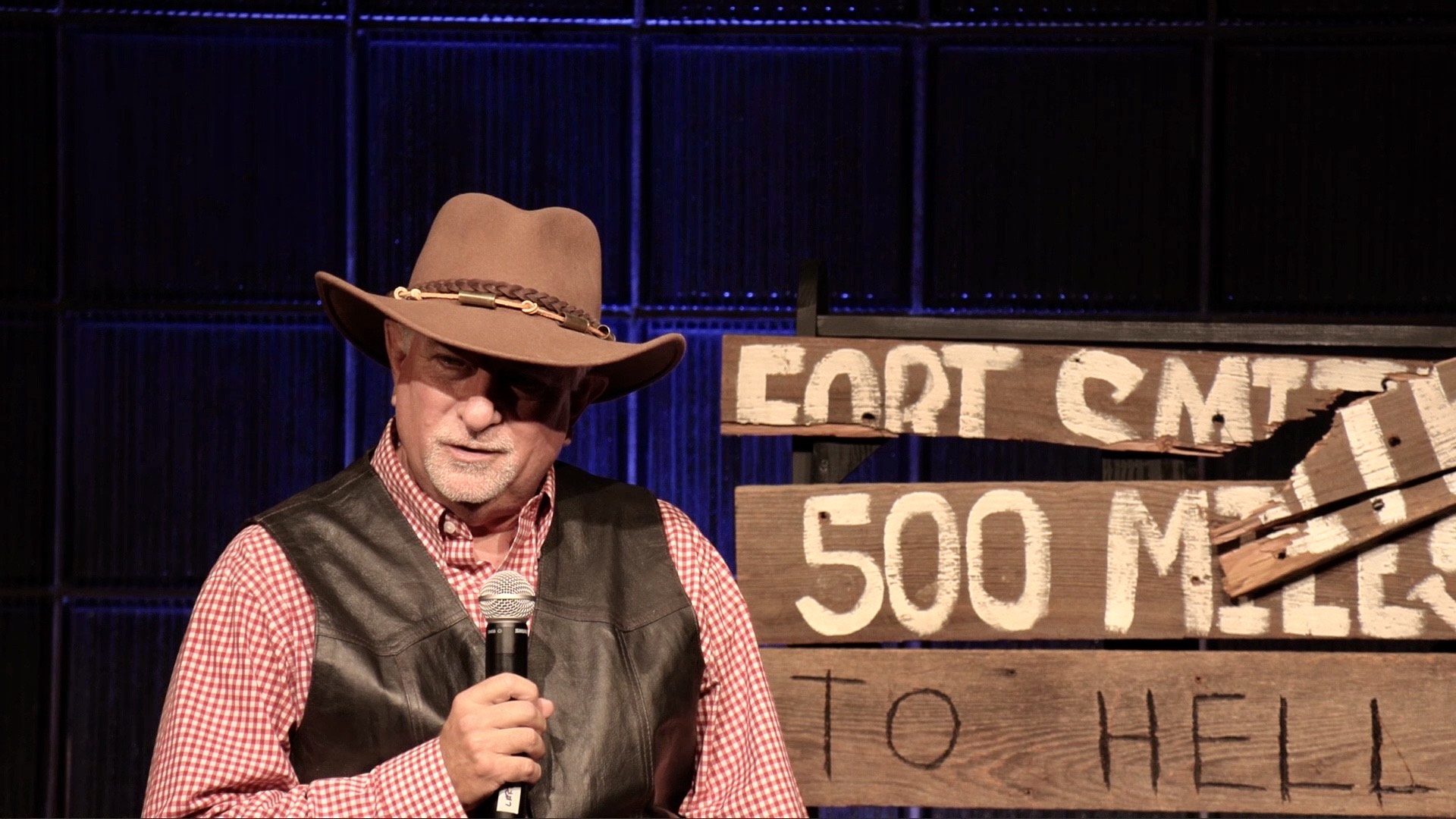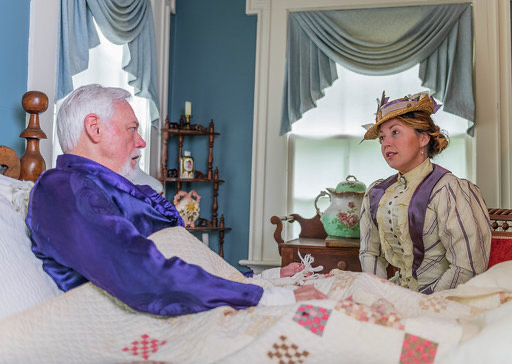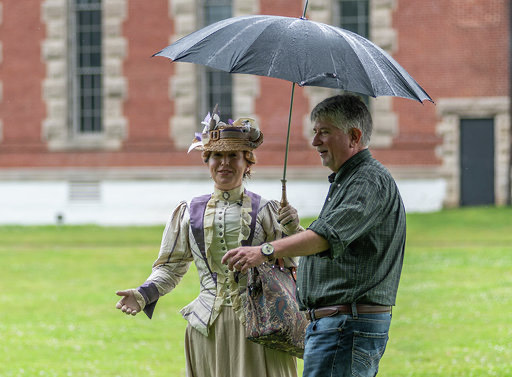Larry Foley, University of Arkansas School of Journalism and Strategic Media professor, always wanted to make three films — “The Buffalo Flows”, “The First Boys of Spring” and “Indians, Outlaws, Marshals and the Hangin’ Judge.” The latter will be making its broadcast debut on Arkansas PBS Wednesday, Nov. 29, at 7 p.m.
“I’ve been thinking about this story for much of my adult life,” Foley said of his film “Indians Outlaws, Marshals and the Hangin’ Judge.”
Foley, a native of northwest Arkansas, said he often visited Fort Smith, when he was younger and thought Federal Judge Isaac Parker was an interesting choice for a story.

Parker was the infamous “hangin’ judge” who hanged 79 men on the gallows in Fort Smith and sentenced 160 people to death.
“I do like Judge Parker,” Foley said. “He was colorful, but at times contradictory. Parker said a lot of things. He sent all these guys to die, but he was against capital punishment.”
The award-winning film, released in 2020, blends a first-person narrative with actress Jennica Schwartzman playing Ada Patterson, a reporter for the now defunct St. Louis Republic, with documentary storytelling featuring scholars from eastern Oklahoma and western Arkansas. The real Ada Patterson interviewed Parker, played by Bill Rogers, who was bedridden with kidney disease.

Because he had access to the microfilm of the original 1896 story written by Patterson archived at the Museum of Missouri History in St. Louis, he felt the best path to tell the story was to combine the storytelling elements.
“I can’t improve on this,” he said, referring to the St. Louis Republic article. “This could be bad if we got bad actors, but I knew Jennica would be perfect for Ada Patterson and Bill Rogers, who I’ve known for many years, was what I believe to be an accurate portrayal of Judge Isaac Parker.
“I wanted to be precise with everything and I knew techniques shouldn’t take away from the story. I knew if we could get the right actors, then this would be a great film.”
Foley went through extensive research to make the film as accurate as possible, looking at the film and novel “True Grit” which was written by Charles Portis and “Hell on the Border” by S.W. Harmon.
Foley interviewed scholars such as Dr. Julia Coates, professor of American Indian History and a citizen of the Cherokee Nation; retired federal judge Paul L. Brady, great nephew of Bass Reeves, who is believed to be the first black U.S. deputy marshal west of the Mississippi and served under Parker for 32 years; University of Arkansas Chancellor Dr. Charles Robinson; and many more.
Foley also conducted visual research such as “digging into photos at Fort Smith and the National Cowboy & Western Heritage Museum in Oklahoma City.
“We conducted a lot of research because we wanted to get the locations correct,” Foley said.
A new series follows a dramatized telling of Reeves, which Foley said he enjoys, but can sometimes bend the story, which he hopes he avoided.
“I certainly hope we busted some myths,” he said. \We left no stone unturned and did the best we could telling an accurate story.”

Portions of the film feature sculptor E. Spencer Shubert, who created a sculpture of Parker, which sits in east Fort Smith in Gateway Park and faces down the street he once served.
Reeves also has a monument dedicated in 2012 in the western part of Fort Smith, overlooking U.S. Route 64.
Foley said his favorite shot of the film is from the vantage point over Reeves statue’s shoulder looking down on the transportation of Parker’s statue into Fort Smith via U.S. Route 64.
“It was like Cesar coming to town,” he said. “I liked the idea of Judge Parker coming down the street as Bass Reeves was watching.”
“Indians, Outlaws, Marshals and the Hangin’ Judge” airs Wednesday, Nov. 29, at 7 p.m.
Larry Foley has been writing, producing and directing documentary films for more than 40 years. His films have earned eight Mid-America Emmys from the National Academy of Television Arts and Sciences, and 24 Emmy nominations in writing, journalistic enterprise, history, cultural history, special program and community service. His films have also received four Best of Festival of Media Arts awards from the international Broadcast Education Association.

